On The Job as a food court cleaner: Exhausting work which could be easier if people cleared their own plates
In a Channel NewsAsia's series profiling some of Singapore’s essential but underappreciated jobs, Jalelah Abu Baker tries her hand at working as a cleaner at a food court. She experiences first-hand the dismal tray-return culture and the intense fatigue that comes with working on your feet all day.
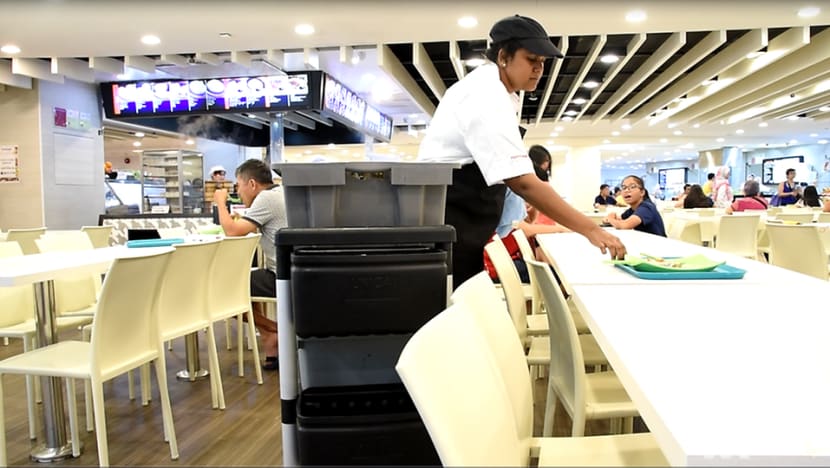
Being a cleaner at the food court was physically demanding, as it required me to be on my feet almost the whole time. (Photo: Hani Amin)
SINGAPORE: Midway through my eight-hour cleaning shift, I had had enough of removing soaked tissue from sauce plates, fishing out submerged soup spoons and wheeling a cart in circles.
I had been on my feet for the whole time, save for my one-hour break, and I was ready to go home. I had aches in back muscles that I did not even know existed, and my feet were begging me to have a good sit-down.
It was my first day as a cleaner at food court Kopitiam, and I was starting to realise that it was a largely thankless, physically challenging job.
When my shift at the outlet within Sun Plaza shopping mall in Sembawang started at 12pm, I whizzed around skilfully and energetically, weaving in and out of the narrow aisles. I was eager to demonstrate my abilities to my older colleagues.
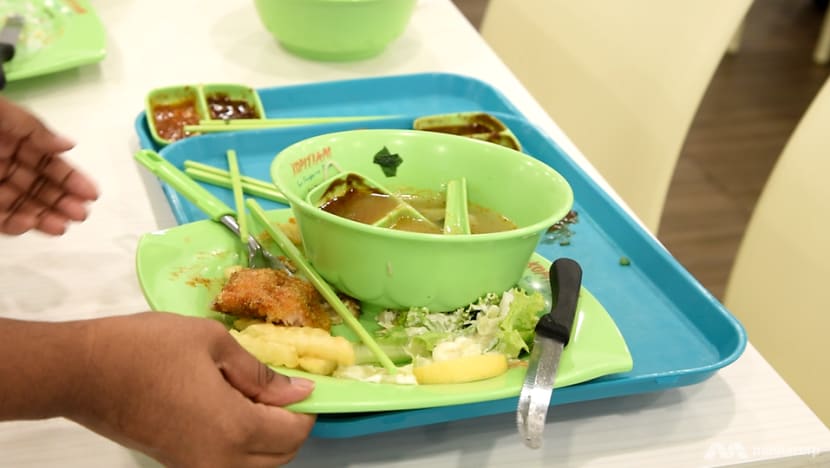
But while I gingerly touched used plates with my bare hands, they did it without a second thought. I had thought of wearing gloves, but Bala, my supervisor, told me why he did not. He had tried once, but the slippery gloves caused a cup to fall and break, and that was the last of it.
I had no intention of breaking any cups, so I chose not to.
LIVING THROUGH LUNCHTIME
I was on high alert for green plates that indicated that they were from halal stalls, since I was in charge of the halal cart. It felt manageable, but suddenly there were green plates at every turn. The cart started getting harder to control, stacked with a lunchtime load.
At one point, I left my cart in a corner, picking plates up with my hands, then returning to the cart to deposit them. Clever, or so I thought. Bala told me that I could not leave my cart unattended.
Before I started the job, I had evoked images of the many cleaners I had come across, deftly clearing the plates on the table and moving on to the next table in a jiffy.
What I actually did felt very different, as I clumsily picked up plates and emptied their contents, at times accidentally littering or spilling liquid outside the bin. I struggled to find an angle that would allow me to throw trash on one side, and place plates and cutlery on the other.
As I became more flustered, my colleagues remained quick and nimble. More important - at least to me - they were cheerful and helpful.
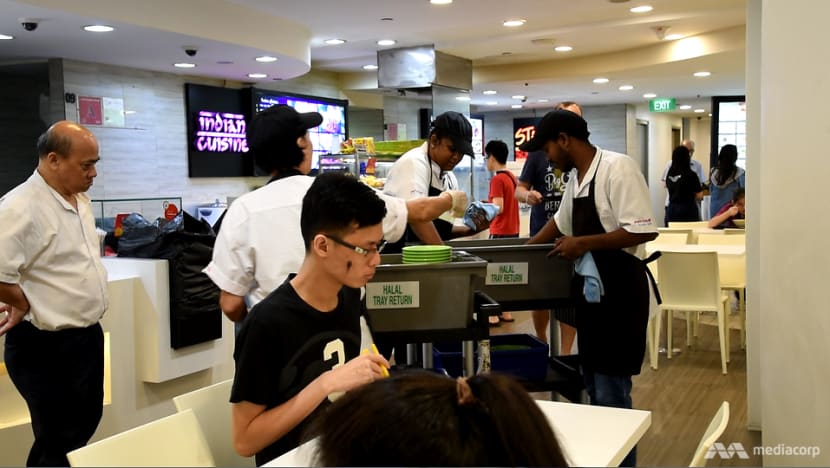
On shift with me were two older Singaporean women, my supervisor Bala, and the person overall in charge, who was from China. The older women were excited to show me the ropes and jumped in to help me whenever they could. Still, despite their energetic demeanour, it was clear the work was physically challenging.
One sat down whenever she could, while the other said: “Don't go so fast now. Relax first, later the crowd will come, then it will be very busy. You will get tired.”
They even involved me in juicy work gossip - I heard of a colleague who got bossy in the absence of the boss and complaints of shoddy work. In my Kopitiam shirt, apron and cap, doing the dirty work with them, I was already welcomed as one of the team.
But more than that, they also taught me, either in halting English or a mix of Mandarin and Malay. Some of the tips seemed initially like simple things - how to stack my plates in order to maximise the area in my cart and when my cart was full enough. Nonetheless, they made life easier for the rookie cleaner.
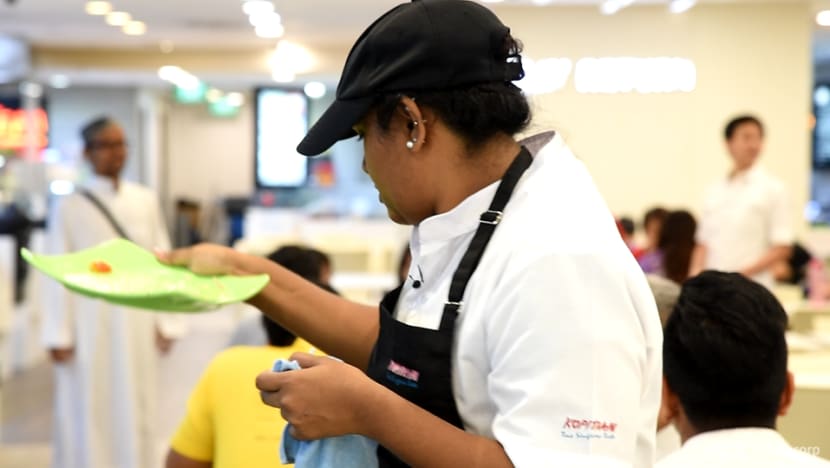
Most helpful was Bala, a Malaysian who has been working there for about three years. He was tasked with supervising me so he could help me communicate with the cleaner in charge, who did not speak English. Bala had studied Mandarin in school for a few years and spoke the language fluently. He used to be a cleaner at the mall itself, but found that being a cleaning supervisor at Kopitiam was more lucrative, as he gets bonuses twice a year and yearly increments.
At the end of the lunchtime madness, I was left wondering if I would have survived even an hour at a more crowded outlet. The one in Sun Plaza, I knew from times I had dined at other outlets, was not always very busy.
EXPERIENCING THE DISMAL TRAY RETURN CULTURE FIRST-HAND
As the shift continued, it became clear that the job was being made more challenging by the patrons' inconsistent approach to clearing plates and returning trays.
While some were being returned to the right place, many items were left on the table. I was not surprised. Tray return is one area that Singapore has consistently lagged in. Surveys over the years have shown that people do not clean up after themselves. A number of initiatives have been introduced to encourage patrons to clear up after themselves, from having to place a returnable deposit to a roving tray collection machine.
At Yishun Park Hawker Centre and Timbre+, run by Timbre Group, all meals are served on a tray with a S$1 deposit that is returned when the tray is returned. This has worked well. A spokesman said that at Timbre+, the return rate is 97 per cent and at Yishun Park Hawker Centre, it is about 70 per cent. The national average is 20 per cent.
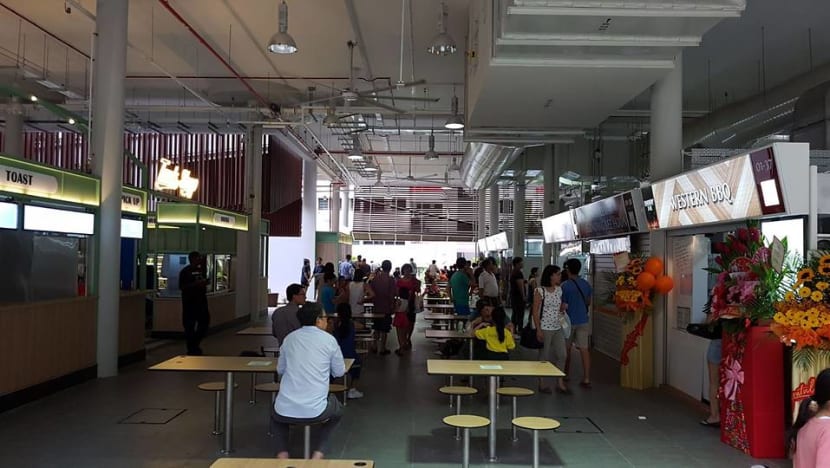
“Our hawkers are also behind us on this rationale and constantly help us to explain to patrons about this initiatives and encourage them to be on board with us,” a spokesman said.
Despite its effectiveness, Public Hygiene Council chairman Edward D’Silva said it is not a system that should be implemented elsewhere.
“That would mean that everything we do, we need a monetary incentive to behave. But that shouldn't be the case. Such civic-mindedness should be part of our DNA,” he said, adding that he has observed in countries like Japan that such graciousness is possible.
A report by the Ministry of the Environment and Water Resources on hawker centres in February this year said that the often quoted reasons for not returning trays include the belief that doing this would deprive cleaners of their jobs, and that cleaners would remove the tray and crockery even before patrons can return them to the tray-return station.

The owner of cleaning services firm Kleanway, Tan Cheang Hean, rejected those notions. Mr Tan, who supplies cleaning services to Kopitiam outlets, said that if people cleaned up after themselves, the cleaners could focus on cleaning the tables and sorting the plates.
And he said that if patrons did more to clean up after themselves, it would result in greater productivity from his staff - he said that manpower is a constant issue, with his many elderly workers finding it hard and tiring to work long hours, and falling ill frequently. As a result, anything which could make the cleaning process run more smoothly would be beneficial.
"I'm flexible with them. Some of them can work four hours, others six, others eight, so I let them choose how many hours they want to work," he said.
CLEARING RUBBISH AND DISHWASHING
Clearing plates and trays was my main job, but like the supervisors, I also doubled up as a garbage collector and dishwasher.
First, with help from Bala, I filled up a green bin with black trash bags containing rubbish collected over the day. The bin was very heavy. I could only shuffle my feet slowly as I made my way to the lift to get to the refuse disposal area. I was in awe that skinny Bala would usually handle the bin on his own.
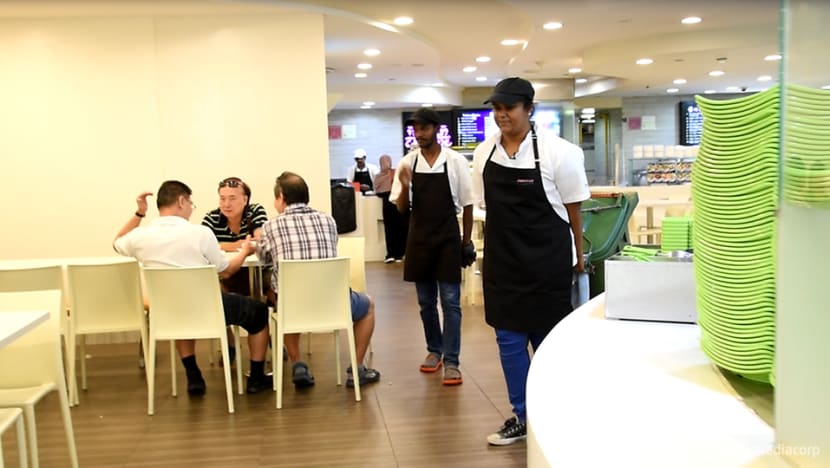
There, I swung the bags into the incinerator, using all my strength to get the last of the bags. Tolerating the smell took some effort, but after a while of being there, I was able to ignore it.
It took another two rounds to clear all the rubbish, including those from the stalls.
I also dabbled in dishwashing, the task I found to be the easiest, as it was the only one that was not completely manual. All other tasks I had to do required manual effort, but things could be changing with the launch of an Industry Transformation Map for the environmental services sector earlier this month.
INDUSTRY HEADED TOWARDS LESS RELIANCE ON CLEANERS
The roadmap, which offers 33 initiatives under four key themes - technology and innovation, jobs and skills, productivity, and internationalisation - aims to improve productivity, promote growth and create better jobs.
In announcing the launch of the map, the National Environment Agency said that given the manpower constraints in Singapore, it would "not be sustainable to increase manpower in the sector to meet the growing demand for environmental services". Currently, there are more than 78,000 professionals and 1,700 companies in the cleaning and waste management sectors.
Environmental Management Association of Singapore president Milton Ng said that automation and job redesign are especially important in the context of a shrinking pool of people willing to work as cleaners.
“Even if you pay more in the future, people may not want to do such menial jobs. The population is more literate, more educated. Why would they want to pick up after people?” he said.
LEARNING TO BE MORE MINDFUL
Most of the patrons I came across during my two-day stint were kind enough. They had a smile for me and made an effort to push their plates in my direction. However, there were patrons who made me feel invisible.
Others left behind a disgusting mess. The work may be menial and mind-numbing, but behind the job are cleaners, many of whom were old enough to be my grandfather and grandmother. They did their work with pride and good humour, but watching them in action made me realise that most customers could do more to make their life a little easier.
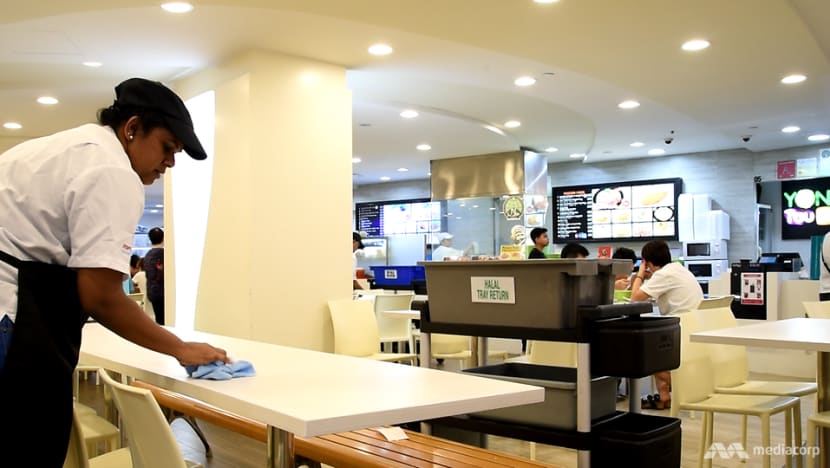
It was real exercise. In just four hours, I had hit 10,000 steps according to my smartphone's fitness app.
I did not witness any scolding or rude customers. The most I got to see over my two days was an irritated man frantically trying to attract the attention of a cleaner to clear the table, but this is not always the case. Mr Tan, who employs more than 150 cleaners, said that his employees do get shouted at by impatient patrons.
Having experienced the backbreaking work that goes into picking up the mess left by patrons, I feel terrible about the times I had left my tray on the table. It is not pretty to have to see and touch the food remains of strangers who generally do not seem to have a regard for the people who clean up.
On my part, I have started clearing my own trays. It is the least I could do now that I have seen the sheer effort that goes into keeping our food courts and hawker centres clean.












